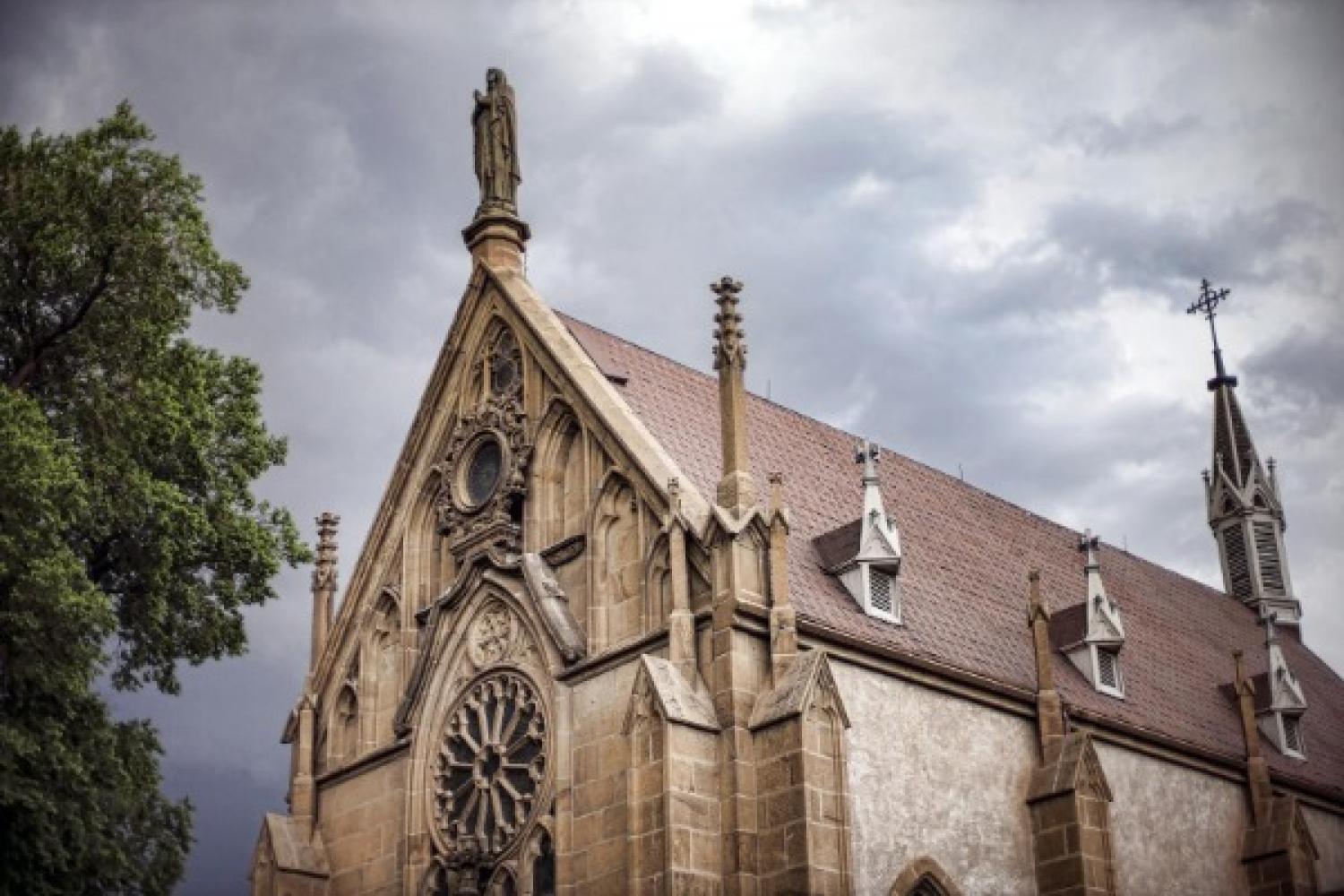
When Archbishop Jean-Baptiste Lamy commissioned the construction of the storied Cathedral of Saint Francis of Assisi in Santa Fe, New Mexico, he arranged for two architects – Antoine Mouly and his son Projectus – to come to the New World from France to oversee the project. The archbishop recommended that the Sisters of Loretto, who ran a school for girls in Santa Fe, seek the assistance of the French architects in constructing a chapel for their school. As Archbishop Lamy's vision of a Romanesque cathedral was temporarily stalled due to lack of funding, Projectus helped the Sisters of Loretto to build a Gothic chapel nearby.
Upon the chapel’s completion in 1878, a problem remained: there was no way to access the choir loft, and any reasonable designs for staircases jeopardized too much space in the small chapel. The nuns were told no staircase could be built – instead, some other means of ascending to the loft would be required. By this time, Antoine Mouly had returned to France and Projectus Mouly had resigned from the building of the chapel, dying the next year in 1879. The nuns, left without the help of the skilled architects, turned to St. Joseph, asking for his assistance through a novena. On the ninth and final day of the novena, a stranger appeared looking for work, accepting the commission to build a staircase.
The mysterious man constructed the staircase in secret, consulting with no one on the details and completing the work with the hand tools he possessed. Some versions of the story have the construction occurring in a single night; another version over the course of a week; still other versions over the course of months. At the end of the commission, the mysterious carpenter simply vanished, leaving Santa Fe without seeking recognition or payment.
The resulting staircase has been described as not merely mysterious, but miraculous. The compact spiral staircase completes two rotations before reaching the choir loft, and the entire structure lacks a central support. The intricately detailed stairs display the laborer's experience and expertise, made even more impressive by the fact that the stairs are held together with wooden pegs and glue rather than metal nails. To add to the puzzling story of the staircase, the wood from which they are built is of an unknown variety: although it has been identified as a type of spruce, the species of tree from which it was gathered has not been discovered. Experts agree, at the very least, that the wood is not from any species of tree found in New Mexico.
The hand railings were added by a different carpenter in 1887. The chapel (and the stairs) were used daily by the nuns and their students until 1968, when the school was closed and the chapel became a private museum and wedding chapel. The stairs have been closed to the public since that time: although visitors can view the miraculous stairs, they are not allowed to ascend the elegant spiral.
The staircase at Loretto Chapel is a unique miracle in that it remains visible to the public today. Willa Cather, who chronicles the life and ministry of Archbishop Lamy in New Mexico (naming him Latour) in Death Comes for the Archbishop, offers a fitting reflection on miracles: "The Miracles of the Church seem to me to rest not so much upon faces or voices or healing power coming suddenly near to us from afar off, but upon our perceptions being made finer, so that for a moment our eyes can see and our ears can hear what is there about us always" (Death Comes for the Archbishop).

The First Draught
To receive the Weekly Update in your inbox every week, along with our weekly Lectio Brevis providing insights into upcoming Mass readings, subscribe to The First Draught.
